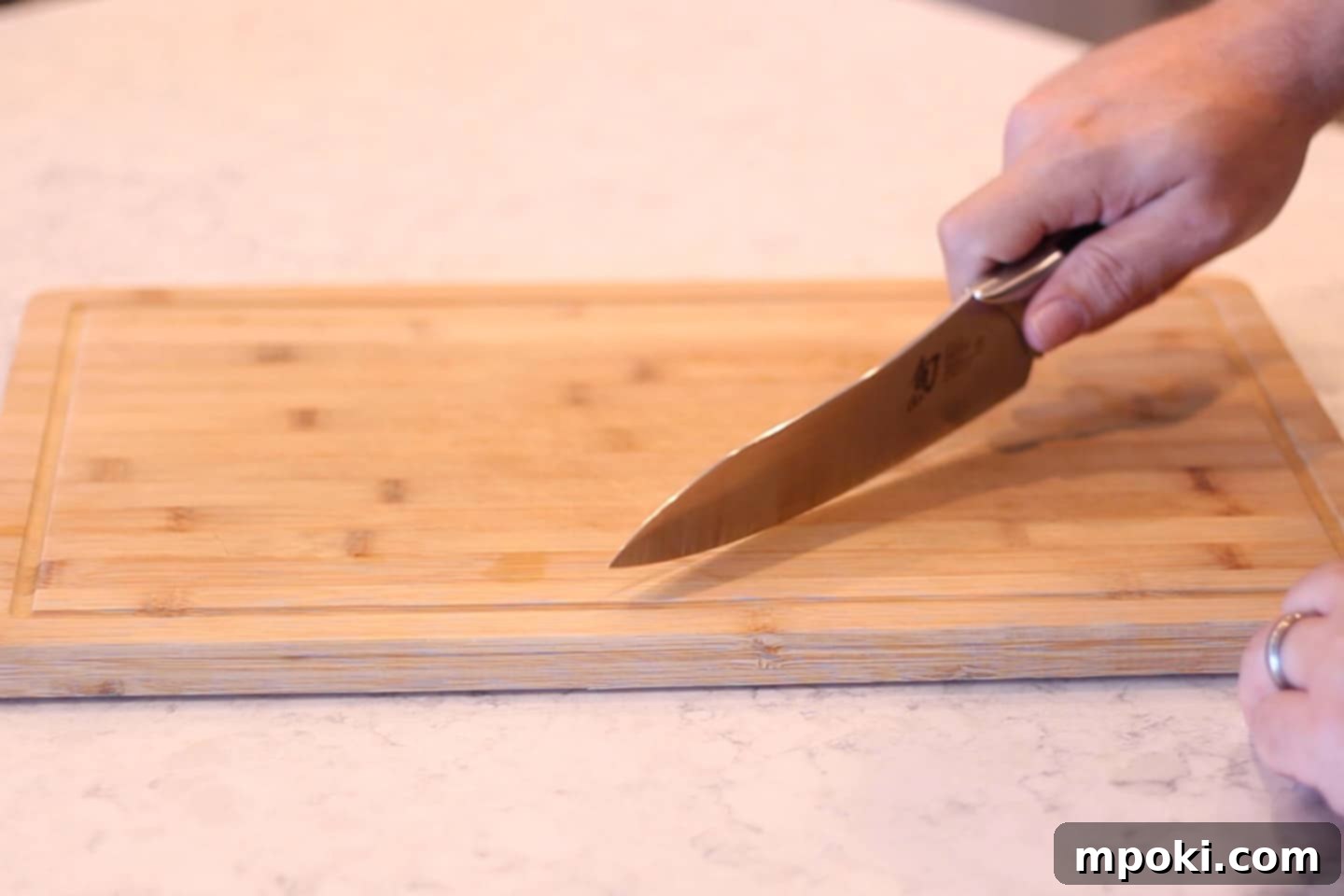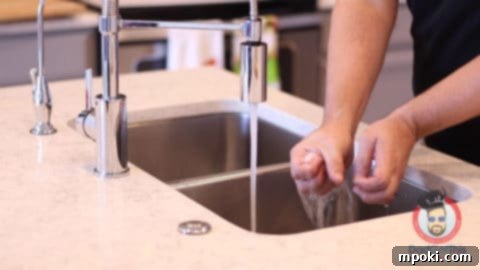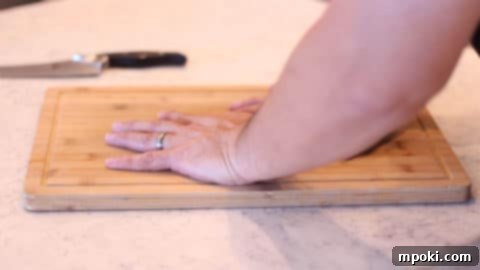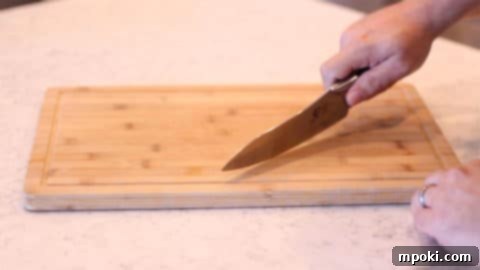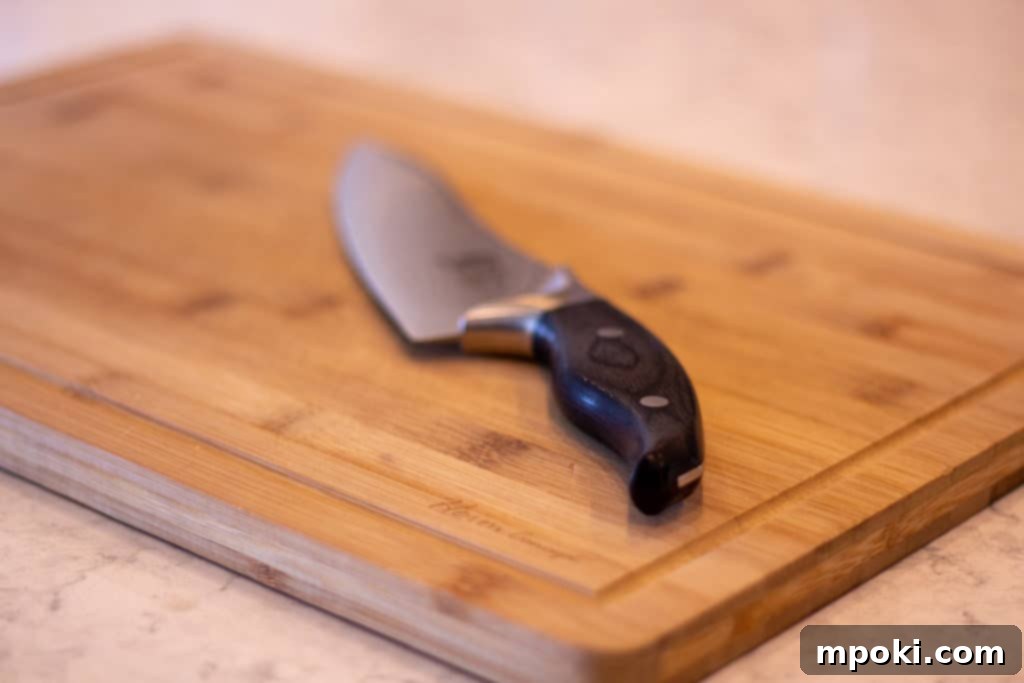
Master Your Kitchen: The Ultimate Guide to Preventing Your Cutting Board from Slipping
There are few things more frustrating, and frankly, more dangerous in the kitchen than a cutting board that won’t stay put. Whether you’re a seasoned chef or just starting your culinary journey, the importance of a stable cutting surface cannot be overstated. Imagine meticulously dicing vegetables, only for your board to slide unexpectedly, leading to a potential finger injury or a messy kitchen disaster. It’s a common problem, but thankfully, a surprisingly simple solution exists. Here at Dad Got This, we understand these everyday kitchen challenges, and we’re excited to share a clever “Dad Hack” that will keep your cutting board firmly in place, allowing you to chop, slice, and dice with confidence and precision.
This Page Contains Affiliate Links. For more Information See My Disclosures here.
The Critical Importance of a Stable Cutting Surface
A wobbly cutting board isn’t just an annoyance; it’s a significant safety hazard. When your board slips, your knife can follow an unintended path, leading to cuts and injuries. Beyond safety, a stable surface dramatically improves your cooking efficiency and the quality of your prep work. Think about it: without the constant need to readjust your board, you can focus entirely on your knife skills, achieving more consistent cuts and speeding up your meal preparation. This foundational stability is essential for everything from finely mincing garlic to breaking down a whole chicken.
Safety First: Why Stability Prevents Accidents
In the bustling environment of a kitchen, every element should contribute to a safe and efficient workflow. A cutting board that moves freely undermines this safety. A slip can result in severe cuts, ranging from minor nicks to deep lacerations requiring medical attention. Ensuring your cutting board is anchored is a primary step in preventing such mishaps, making your kitchen a safer place for everyone, especially when little helpers are around.
Precision and Efficiency: The Unsung Benefits of a Secure Board
Beyond the obvious safety advantages, a non-slip cutting board elevates your cooking experience. When your board is stable, you gain greater control over your knife, allowing for more precise cuts. This precision isn’t just for aesthetics; it ensures even cooking and better texture in your dishes. Moreover, a stable board means you can work faster and more confidently, transforming tedious chopping tasks into enjoyable, efficient steps in your meal preparation process. It reduces the physical strain of trying to hold the board still while cutting, making long cooking sessions more comfortable.
Understanding Why Cutting Boards Slip
Before diving into the solution, it’s helpful to understand the culprits behind a slippery cutting board. Most countertops are smooth, offering little friction. Similarly, many cutting boards have smooth undersides. When these two smooth surfaces meet, especially with any moisture present, the coefficient of friction drops dramatically, leading to the dreaded slide. Lightweight boards are particularly prone to this, as they lack the mass to resist movement from the force of chopping. Even sturdy wooden boards can be unstable on a slick surface.
Introducing Dad’s #316 Kitchen Hack: The Simple Paper Towel Solution
Dad cooks a lot, and like many home cooks, he quickly discovered that cutting boards have a mind of their own. This constant sliding around was not only annoying but also made precision cutting difficult and unsafe. After experimenting with various methods, Dad developed a brilliant, yet incredibly simple, solution that he proudly calls “Dad Hack #316.” This hack is a game-changer for kitchen safety and efficiency, proving that sometimes the best solutions are the most straightforward.
How to Prevent a Cutting Board from Moving: A Step-by-Step Guide
This simple hack utilizes an everyday kitchen item – paper towels – to create a surprisingly effective non-slip base for any cutting board. It’s quick, easy, and requires minimal effort, making it perfect for busy cooks.
Secure Your Cutting Board
This straightforward method will stop your cutting board from sliding, enhancing both safety and efficiency in your kitchen.
Equipment
- Cutting Board
- Faucet
Materials
- 4 Sheets Paper Towels
Instructions
Gather Your Supplies: Start by getting four sheets of standard paper towels. The exact number can vary slightly depending on the size of your cutting board, but four sheets typically provide ample coverage and stability.

Moisten the Paper Towels: Take the stack of four paper towels and run them under your kitchen faucet. You want to thoroughly wet them, but not soak them completely to the point of dripping excessively. Just enough water to make them pliable and sticky.

Squeeze to Damp: Gently squeeze the wet paper towels to remove any excess water. The goal is for them to be damp, not soaking wet. They should feel moist but not dripping, similar to a wrung-out sponge. This dampness is crucial for creating the suction effect.

Prepare Your Countertop: Flatten out the damp paper towels and spread them evenly on the countertop surface where you intend to place your cutting board. Make sure they cover an area slightly larger than the base of your board to ensure maximum contact and stability.

Position and Press: Carefully place your cutting board directly on top of the damp paper towels. Once it’s centered, press down firmly on the cutting board for a few seconds. This action creates a slight vacuum or suction effect between the damp paper towels and both the countertop and the board, effectively locking it into place.

Enjoy a Stable Surface: Give your cutting board a gentle nudge to test its stability. You’ll find it’s now firmly anchored, providing a secure and safe surface for all your chopping needs. Enjoy the peace of mind that comes with a non-moving cutting board!

Video Demonstration
Have you tried this Dad Hack? We’d love to see it in action! Mention @DadGotThis or tag #DadGotThis on social media!
Works with All Kinds of Cutting Boards
One of the best aspects of Dad’s #316 Hack is its universal applicability. This method effectively prevents a cutting board from moving regardless of its material or size. Whether you’re using a lightweight plastic board, a sturdy wooden one, a sleek bamboo board, or even a heavy composite surface, the damp paper towel trick creates the necessary friction to keep it stable. The only exception, as Dad would jokingly point out, might be those disposable cardboard cutting sheets – best to skip this hack with those!
Beyond Paper Towels: Other Non-Slip Solutions and Their Downsides
While Dad’s paper towel hack is incredibly effective and economical, there are other methods people use to secure cutting boards. Some utilize specialized non-slip mats or rubber grips designed specifically for this purpose. Others prefer dedicated cutting boards with built-in rubber feet. While these can certainly work, they often come with added costs, can take up extra storage space, or might not be as readily available in every kitchen as a roll of paper towels. The beauty of the damp paper towel method lies in its simplicity, accessibility, and zero additional investment for most households.
Speaking of Cutting Boards: Choosing the Right One
Now that you know how to keep your cutting board from slipping, you might be wondering which type of board is best for your kitchen. The debate between wood and plastic cutting boards is a long-standing one, with each offering unique advantages and disadvantages in terms of hygiene, knife friendliness, and durability. Dad has thoroughly broken down his cutting board system and offers a detailed comparison of wood vs plastic cutting boards in a comprehensive blog post and an informative video. Dive into his insights to learn more about selecting and organizing the ideal cutting surfaces for your culinary adventures.
Maintaining Your Cutting Boards for Longevity and Hygiene
Regardless of the type of cutting board you choose, proper maintenance is key to extending its lifespan and ensuring kitchen hygiene. Wooden and bamboo boards require occasional oiling to prevent drying and cracking, while plastic boards can often be run through a dishwasher for easy sanitation. Always clean your board thoroughly immediately after use, especially after handling raw meats, to prevent bacterial cross-contamination. With a stable board and proper care, your cutting surfaces will serve you well for years to come.
Now Go Cook Something with Confidence!
With this simple yet incredibly effective Dad Hack, you can transform your cooking experience from one of potential hazards and frustration to one of safety, efficiency, and enjoyment. Say goodbye to the annoyance of a sliding cutting board and hello to precise cuts and a more confident approach to meal prep. This is just one of many practical tips and tricks Dad loves to share to make life in the kitchen easier and more fun.
Did you know Dad has a fantastic YouTube Channel filled with more insightful hacks, recipes, and cooking inspiration? Well, you should definitely go check it out! You’ll find a wealth of knowledge to help you master your kitchen and unleash your inner chef.
Embrace the stability, enhance your safety, and cook up a storm!
